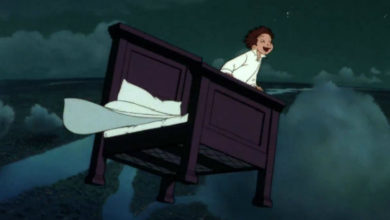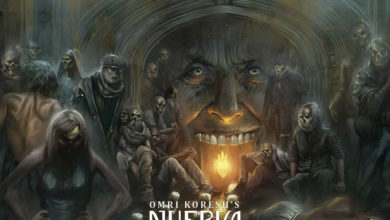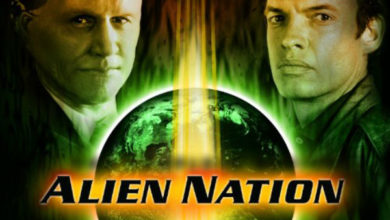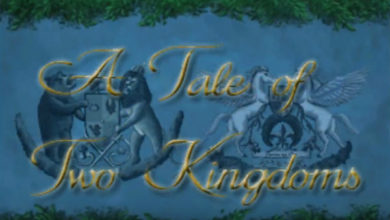Space Oddities: Cartoons (Ron Cobb, 1965-1976)
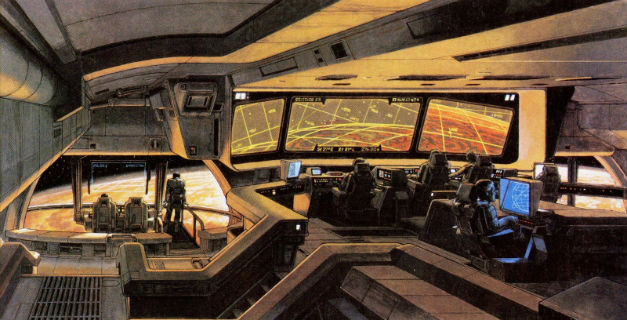
Each month, Raz Greenberg reviews an overlooked piece of science fiction, fantasy or horror – be it a film, a television episode, a comic or a game – one that should have gotten more attention when it first came out and should still be remembered, in his opinion. This month, he explores some lesser-known works by one of the great designers of genre cinema.
We’re back with Space Oddities after a month’s hiatus, with something a little different this time around. You may not be familiar with Ron Cobb’s name but you’ll be surprised to learn how much of his work you’re familiar with – from the mid-70s to the early-90s, he was involved with the design of pretty much every significant blockbuster you can think of, often responsible for the “star prop” in each production. Notable examples include Star Wars (he designed the aliens in the famous cantina scene), Alien (he was solely responsible for the design of the entire human environment of the film – losing the spotlight to H.R. Giger’s design of the creature and the alien environment), Conan the Barbarian (he designed all the weapons and armor) his magnum-opus The Last Starfighter (he designed pretty much everything there) and perhaps above all Back to the Future (yes, the De Lorean time machine is his baby). One thing that stands out in both Cobb’s cinematic and non-cinematic body of work (he also did some visualization for NASA projects, designed the flag of the Ecological Movement, among other things) is his ability to infuse his designs with a sense of amused irony – he never takes himself completely seriously, often making a blink-and-you’ll-miss-it visual gag within an otherwise serious project. So unsurprisingly, in addition to his more familiar works, he also had a short but significant career as a cartoonist.
Cobb’s political cartoons, widely syndicated in counterculture publications between mid-60s and mid-70s, often wander into the science fiction territory in their attempt to point at the absurdity of the real world. It’s perhaps not surprising that in order to support himself during that period, Cobb also drew covers for the geek magazine Famous Monsters of Filmland. The political reality of the era, for Cobb, was scarier than any incarnation of Frankenstein or Dracula.
The threat of nuclear annihilation is a recurring motif in Cobb’s cartoons. Atomic explosions light the sky as dolphins – who literally inherit the Earth – watch, the American flag still stands in the midst of an apocalyptic wasteland, children hide under the blanket in what appears to be storage for nuclear weapons. While these cartoons are very much a product of the cold-war era, they also reflect on the universal of untimely stupidity of militants and leaders anywhere. More specific cartoons aimed against what Cobb viewed as the rise of fascism in the United States correspond with his work on Famous Monsters of Filmland – one particularly funny (and scary, when examined closely) cartoon presents America as a woman who tries to banish a Soviet Dracula using a swastika instead of a cross.
Racism and intolerance were another target for Cobb’s well-aimed liberal arrows. One of his best cartoons shows aliens looking at human survivors of the apocalypse expressing confusion at what, exactly, is the difference between humans of different races. Other cartoons tackle the issue of how, despite America’s huge advancement in science and technology, it’s still behind on racial equity – African-Americans forced into cleaning jobs even after humanity has reached for the stars, native Americans wonder what their next 200 years will bring about at the celebrations of the 200th American Independence Day.
Technology and environment were other issues close to Cobb’s heart. Several cartoons he drew detail the uprising of machines against man, or the plain absurd territories into which technology takes us (person stack in an endless traffic jam inside a super-fast “Firestorm” car), others show how people ignore the beauty of nature that surrounds them, only to be reminded of it when it’s gone. Examining Cobb’s cartoons makes it easy to see why he later excelled as a futuristic designer – but at the same time, these cartoons draw attention to more critical approach to many elements in the genre, notably the admiration of science and technology, especially of the military and industrial kind.
Cobb’s style, somewhat reminiscent of Mad magazine, presents grotesque characters who are either miserable or stupid (or both) as they’re surrounded by detailed landscapes of post-war ruins, heaps of industrial garbage or weapons of mass-destruction that are ready to do their damage. In an era where militarism and xenophobia raise their ugly heads once more, Cobb’s cartoons are every bit as relevant today as they were upon their original publications.
Where to get it: Cobb’s cartoons have been collected in several published volume, all unfortunately out of print. You can, however, see quite a few of them in his official website.

